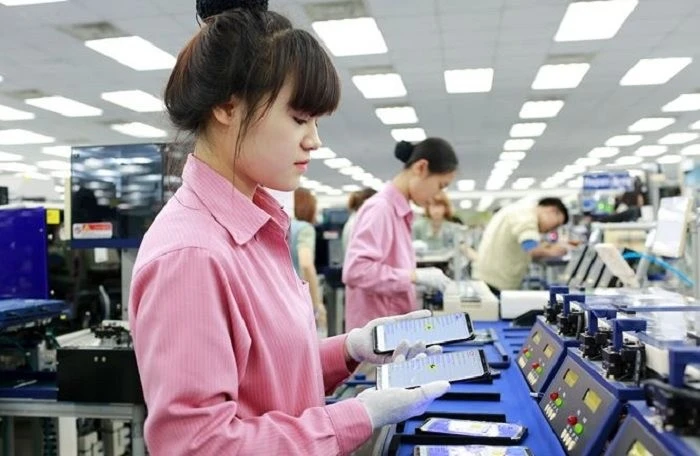
JOURNALIST: - According to the General Statistics Office, the GDP for the first nine months of 2019 showed an increase of 6.98% compared to the same period last year, the highest increase in nine months in the last nine years. What is your comment on this figure?
Dr. NGUYEN DINH CUNG: - At this time, economic growth is high but mainly due to exports, which is full of many risks. Specifically, exports in last nine months increased by 7.6% but depended heavily on the US market only, which was up by 26.6%. Other markets showed lower increase or even decrease, such as the EU which reached USD 34.2 bn, down 1.9%; China USD 32.5 bn, down 2.9%; or ASEAN USD 21.3 bn, up only 2.6%; Japan reached USD 16.6 bn, up 7.5% and South Korea reached USD 16.6 bn, up 9%. Having become the largest export market to the US has put Vietnam's economy in uncertainty and high risk, because the US will soon tighten on Vietnamese goods.
Not only the economic growth, but the economy in general is showing weaknesses that depend too much on Foreign Direct Investment. Import-export turnover of FDI enterprises account for 60% of total export turnover and the economic growth depends on just a few large FDI enterprises. Last year, Samsung exported USD 60 bn worth of goods, equivalent to a quarter of the country's total exports. Therefore, the nature of growth is very precarious, potentially risky, and quality of growth is not high enough.
- How do you assess the structure and prospects of the current economic sectors when they contribute to growth?
- Currently, our country's economic growth is actually unstable. The economic structure has contributions from many sectors, but the actual contributions of the sectors to GDP basically remain the same, as there is no movement within the economy, and no movement of resources to get more efficient and lucrative economic sectors. Today, looking at the components of the economy in our country, we see that the FDI sector is increasing rapidly, making a huge share of the private sector but a decrease in State, even while the shift of development resources is still largely under Government Administration.
Reality shows that new things are very difficult to develop in Vietnam, while the economic mechanism is still "follow the rules, and follow the process", which is destroying all creativity. In my opinion, the cause of this situation is that Vietnam does not have a proper market, making the economy much less dynamic. As a result, there are no new products, industries and policies to promote growth, while these are the key factors that determine the internal development of the economy.
- Last time we talked a lot about choosing the right FDI, and the need of new generation FDI. Does this action help in more sustainable growth?
- State investment dependent on FDI alone is no longer a growth motivation. Looking at statistics, the disbursement of public investment from the beginning of the year so far is equal to 69.2% of the plan, up 5.3%, while in the first 10 months of 2018, disbursement reached 70.3% compared to the plan and increased by 12.1%. Meanwhile, FDI increased 26% in a number of projects, but decreased 14.6% in newly registered capital. Decreased capital, reduced project size, are sufficient evidence to doubt the project quality and investment methods of foreign enterprises in Vietnam. In addition, additional FDI also decreased 16.4% over the same period, implemented FDI only increased 7.4%, while indirect foreign investment increased sharply to 70.5%. So, who are the foreign investors here, what and where do they buy, and what are the possibilities of project progress ... we should be concerned about these problems.
Besides the abnormal size and structure, the quality of FDI projects is very noticeable. Among 74 countries and territories that have brought investment projects in the past 10 months, South Korea is the largest investor with USD 2.752 bn, accounting for 21.5% of the total newly registered capital. This is followed by China with USD 2.115 bn (accounting for 16.5%), Singapore with USD 1,839 bn (14.3%), Hong Kong with USD 1,639 (12.8%), Japan USD 1.63 bn (12.7%), Thailand USD 538.1 mn (4.2%), Taiwan USD 454.6 mn (3.5%). It is remarkable to note that investors from Europe and the United States do not appear, while it seems that Chinese investment capital directly and indirectly (with Chinese elements) accounts for nearly 50%.
The question is whether this trend will be reversed when the Politburo in its recent Resolution 50 requires choosing of FDI capital in Vietnam? The answer probably takes time, especially the determination of ministries and other related authorities.
- In your opinion, what is the driving force for sustainable economic growth in coming time?
- For years, we have focused on reforming administrative procedures, cutting down business environment, improving competitiveness, which is only at the top of the issue, while our thinking is the main decisive factor. I think that if we do not remove the ceiling of thinking to reform strongly, move radically and consistently into a market economy, even the "zero scenario" will be difficult to achieve, leave alone sustainable growth. Here, we must see that our core problem lies in using efficient resources, so the focus of reform must be targeted on that only. If we improve efficiency with the current total resources, we can grow as other countries in the region.
- Thank you very much!




















